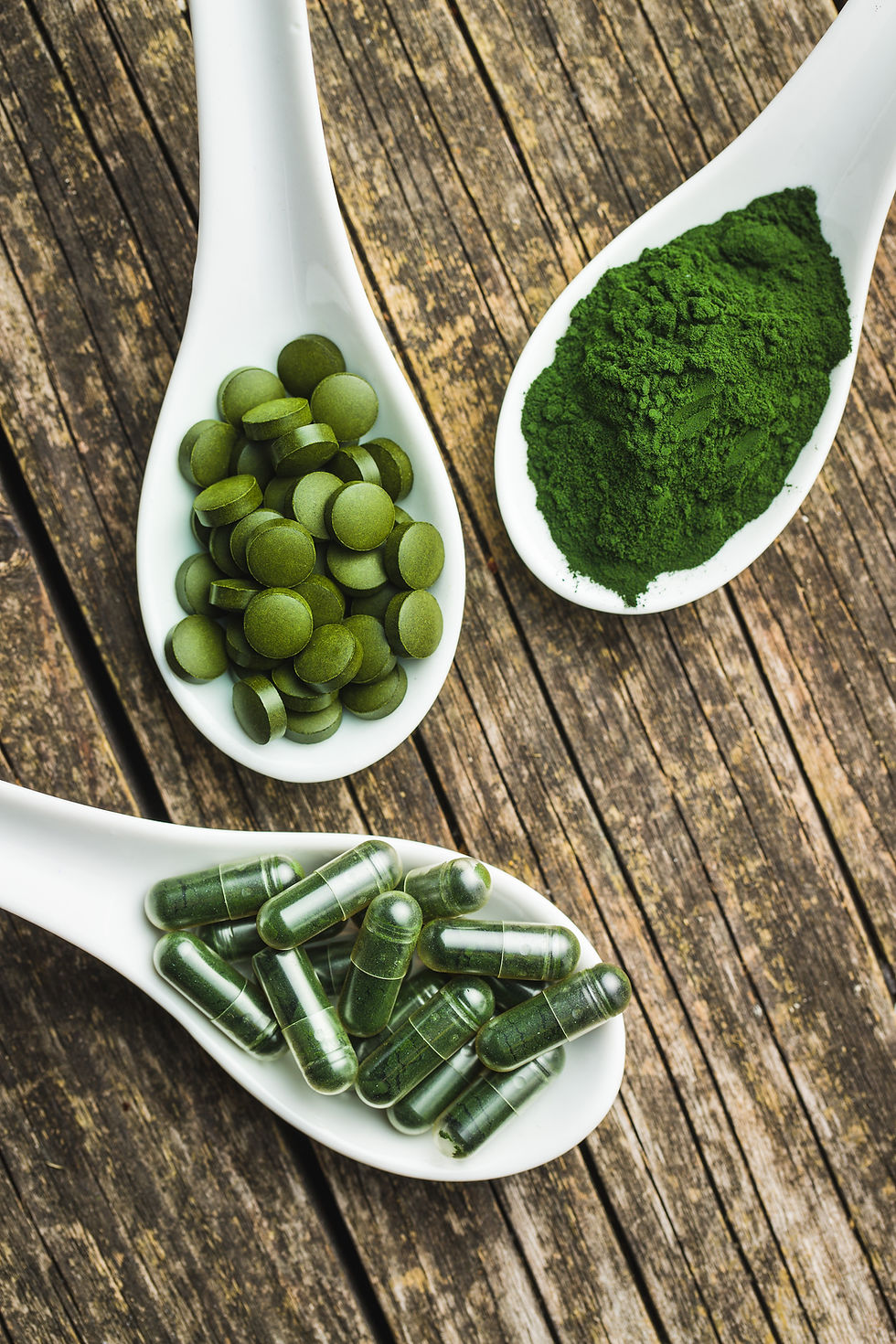The Deal with Liquid Chlorophyll
- Anni Weeks, NDTR

- May 11, 2021
- 3 min read
What do dietitians need to tell their clients about the Tik Tok chlorophyll trend? A nutrition expert breaks down this green plant pigment.

If you’ve been through middle school biology, you know chlorophyll is the thing that makes plants green. When you add it to water, is there more to this Tik Tok-famous tonic? What is the deal with liquid chlorophyll, and what do dietitians need their clients to know?
It comes down to this -- if you’re eating plant-based foods and green veggies each day, you’re getting chlorophyll already. On it’s own or mixed in a drink, chlorophyll has no more vitamins, antioxidants, or healing properties than it would in its plant form. The bottom line is what you’ve heard your whole life through: eat your vegetables.
Read on for more about chlorophyll and how to get it in your diet each day.

What is chlorophyll?
Chlorophyll is a compound found naturally in plants. It is known as the pigment that makes plants and algae green in color.
Use in Plants
Plants use chlorophyll to trap light. Light is needed for photosynthesis, and chlorophyll allows plants to absorb light at slightly different wavelengths.
Not much is known about the bioavailability or metabolism of chlorophyll and its variants.

What foods have chlorophyll?
Since chlorophyll is a pigment that makes plants green, it makes sense that green foods contain chlorophyll. Typically, the dark and leafy green vegetables have rich stores of natural chlorophylls.
The following raw vegetables have naturally occurring chlorophyll content:
Spinach
Parsley
Garden cress
Green beans
Arugula
Leeks
Endive
Sugar peas
Chinese cabbage

Can I take chlorophyll supplements?
The research on chlorophyll is extremely limited. Oral or liquid chlorophyll is not generally recommended since there is abundant evidence that staying well hydrated while eating enough fruits and vegetables each day provides the necessary nutrients.
Studies Are Few and Far Between
There isn’t much evidence supporting chlorophyll beyond clinical use. In fact, a study in the late 80s found that chlorophyllin was no more effective than the placebo.
The lack of research supporting chlorophyllin use suggests that in almost every case, the natural chlorophyll from plants is still the safest way to get your daily dose. There are no carefully controlled studies that have measured how chlorophyll interacts with other nutrients.
Potential Pros
Natural chlorophylls are not known for toxicity, and have been used for over 50 years in clinical settings. Chlorophyllin is the supplemental form of chlorophyll often found in over-the-counter drugs (i.e. Derifil).
Commercial chlorophyllin is water-soluble. It is a semi-synthetic structure, meaning it is a mix of sodium copper salts derived from natural chlorophyll.
Chlorophyllin has been used as an internal deodorant and in wound healing since the 1940s and 1950s. It is more stable than the naturally occurring compound, and it has been used to reduce fecal and urinary odor in therapeutic settings.
Chlorophyllin is also less expensive than naturally occurring chlorophyll. It can be added to food, drugs, and cosmetics as an additive.
Confirmed Cons
Natural chlorophyll is not as stable as chlorophyllin, however chlorophyllin carries with it some unpleasant side effects.
Risks of Chlorophyllin Supplements
Taken Orally
Discoloration of urine or feces
Black or yellow discoloration of the tongue
Diarrhea
False positive results on guaiac card tests for occult blood (stool sample test for hidden blood)
Applied Topically
Burning
Itching
Chlorophyllin has been studied for cancer prevention as well, although a direct link has not been established. What we do know from ample research is that a healthy diet, especially one high in fruit and vegetable consumption, can promote antioxidant effects in the body.
Not Tested for Pregnancy or Lactation
Chlorophyll and chlorophyllin supplements have not been tested for pregnancy or lactation. Women in these stages of life should avoid taking chlorophyll or chlorophyllin supplements.

Try This Expert-Approved Recipe Containing Chlorophyll
The green hue in asparagus is created by chlorophyll. In fact, white varieties are made by covering the stalks with dirt during the development process.
Click here for a kid-friendly Roasted Spring Asparagus Recipe by dietitian Frances Largeman-Roth and the Academy of Nutrition and Dietetics.
References
Higdon J. Chlorophyll and Chlorophyllin. Lpi.oregonstate.edu. Accessed May 2021.
Manaker L. Is TikTok’s Liquid Chlorophyll the Health Cure-All? Experts Say Not Likely. Verywellhealth.com. Published April 22, 2021.
Moore A. So, Is Liquid Chlorophyll Really That Good For You? A Clinical Dietitian Answers. Mindbodygreen.com. Published April 19, 2021.
Sass C. Is It Safe to Drink Liquid Chlorophyll? Here’s What a Nutritionist Wants You to Know. Health.com. Published April 13, 2021.



Comments